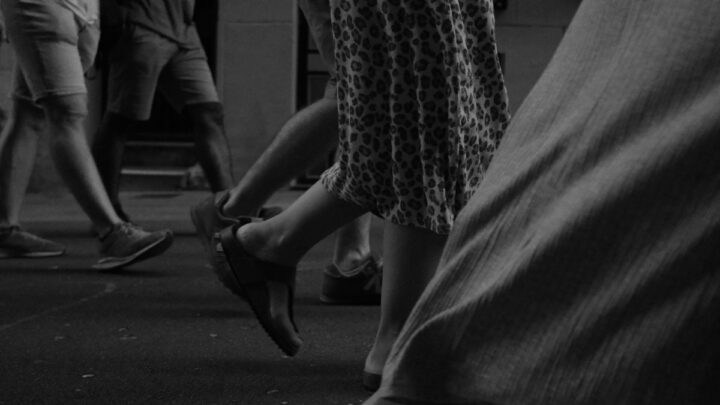Doing street photography is essential for you to learn to see like your camera. However, your eyes and the camera see reality differently, and you should take advantage of this difference creatively.
When it comes to dynamic range, your eyes ultimately outperform the camera. In fact, the human eye can perceive even 21 stops of dynamic range, while the best cameras on the market can perceive just 15 stops of dynamic range.
It means that while your eyes can clearly see in the shadows, your camera on the other side, with its at least -6 stop of dynamic range between light and shadow, will give you those rich shadow pockets that can make the images so fascinating and compelling.
See like your camera does and take advantage of the dinamic-range gap
As street photography is about documenting life, why don’t you take advantage of this dynamic-range gap between the human eye and the camera and use it creatively to express through that dramatic mood with the contrast between light and deep shadows to document our existence as human beings
All that negative space you can show in your street photographs, taking advantage of your camera’s lower performing dynamic range compared to your eyes, can mesmerize the viewer.
This way, you can show a lit person emerging from those deep shadows that allow you to take dramatic and compelling images. And the reverse works perfectly as well: in this case, you can achieve the dramatic mood thanks to a shaded person in front of a brightly lit background. But, again, you need to expose the background, and you will appreciate the dark silhouette.
Your vision as a street photographer: storytelling
To be a good street photographer, you must be a good storyteller. In other words, to take compelling street photographs, you need something to say.
You can’t be an author unless you have something to say.
David Alan Harvey
A good street photographer has his/her own voice, and the way you tell your story is what makes your voice and shows how you perceived scene you captured, expressing your emotion through the street photograph you captured.
With practice, you will start seeing stories developing just in front of your eyes, and you will be able to predict how those stories will evolve, capturing incredible images about how it feels to be human. And this is the primary subject matter of street photography.
Searching the perfect light
If you search for the perfect light condition while doing landscape photography, you probably have enough time to take a shoot without worrying too much about your subject moving away. Fortunately, it isn’t easy that a mountain can move away from the frame. But doing street photography, the time can consist of seconds, instants and not in minutes as in landscape photography.
In street photography, maybe everything is developing in a blink of an eye, and you must set the exposure, compose and take a photograph.
The visualization in street photography
Visualization means that you can see in your mind how the photograph is going to be, even before pushing the shutter button. Visualization is an essential element in creating an expressive picture.
Ansel Adams defines visualization as “a conscious process of projecting the final photographic image in the mind before taking the first steps in actually photographing the subject.”
When your imagination works with your technical skills, you can achieve a great result through visualization. Visualization happens when vision meets the technique.
First shoot then think. Be aware.
As in street photography, differently from landscape photography, you usually have just an istant to take the image it would be better if you first shoot and the think. Street photography is about being connected to reality and the world surrounding you, about being tuned and ready to respond to photos-opportunity catpuring the moment.
A photograph is nothing but the product of a receptive and sensitive mind and a well-executed sequence of actions made to obtain the desired exposure by the camera.
Trust your emotions
Looking at a scene while doing street photography is not enough to take a good photo. It is essential to see and not just look; in the second case, you will not understand when a scene has true potential.
Doing street photography and capturing moments in everyday life is a process driven by impulse. For this reason, you should trust your feelings and take a photograph whenever you feel something that moves you to take an image.
When you are out in the street, you don’t want to capture in images everything you see to look funny or weird. But, as your street photographs represent your unique vision and perspective over the world, you want something more profound. So, through your vision, you decide how to frame reality, the moment to capture, the depth of field, and the exposure.
